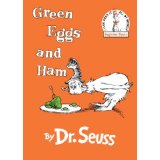We all know the importance of reaching out to “touch the customer.”
We know it takes multiple touches across multiple channels. Some data suggests it takes as many a 15 touches to get a customer to respond. Other data shows we must spread those touches across multiple channels, for example phone (Yeah, that’s so old school but it works), email, Linkedin, etc.
We know the majority of sales people give up far to early, often after the first or second attempt.
But all this brings into question, “What is a touch?”
My friend, Mike Webster, relayed a great story. He was speaking to a sales person who talked about his “touches.” Mike’s observation was, “You’ve actually touched the person one time and annoyed her six more times!”
The reality of the majority of outreach programs I see match Mike’s observation. We are only touching the customer once, the rest of our “follow-ups” are terrible.
Take a look at your own email. How many prospecting notes do you have that have the subject line something like: Re: Re: Re: Re: Re: I wanna sell you something…. Followed by the first line, “I’m following up on the email I sent you two days ago, which was a follow up on the email I sent you four days ago, which was a follow up of the email I sent you six days ago…..
OK, they aren’t literally that, but you get the idea.
Same with phone messages, “I’m following up on my call two days ago, which was a follow up of ……..”
This isn’t “touching the customer!” Simply repeating the same message, saying exactly the same thing time after time is touching the prospect once and continuing to piss them off.
Touching a customer is about building a string of communications, it’s building a story to provoke a response and conversation.
Stories have beginnings, middles, ends. Our “touch campaign” has to have beginnings, middles, ends. Each touch builds on the others creating a more complete picture for the customer. More importantly, each touch creates a different opportunity to find something which interests a prospect, provoking them to respond.
One of my favorite, and most simple, examples is “Sam,” from Dr. Seuss’ Green Eggs and Ham.
Sam persists in his prospecting:
Do you like green eggs and ham?
Would you like them in a boat?
Would you like them with a goat?
Would you like them in the rain……
Sam progresses through at least 12 alternatives, until he finally succeeds and finds the customer interest in green eggs and ham.
Imagine if Sam had used what most people call multi-touch prospecting:
Do you like green eggs and ham?
Did you get my message on green eggs and ham?
I’m following up on my previous calls about green eggs and ham….. you get my point.
Multi touch prospecting is not about saying the same thing to the same person lots of times! It’s building a story/journey and moving the prospect through that journey to find where the customer might have an interest.
Are you truly “touching your customer,” or annoying her repeatedly?

Leave a Reply